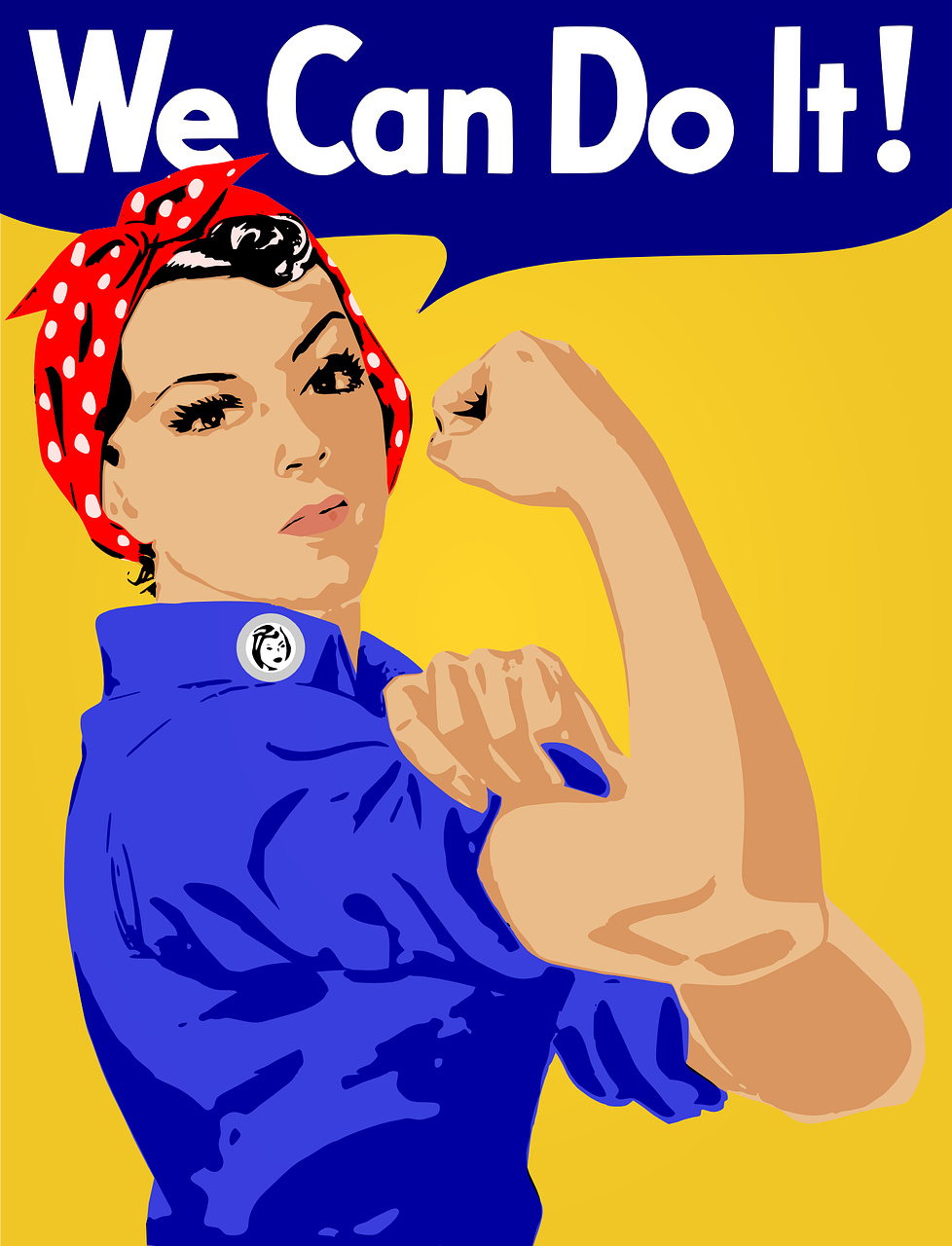
Be Bold For Change On International Women’s Day 2017 Procurious HQ Procurement & supply
But in the 1980s, Miller's "We Can Do It!" poster resurfaced with a bang, and was widely reprinted on T-shirts, mugs, pins and many other products.
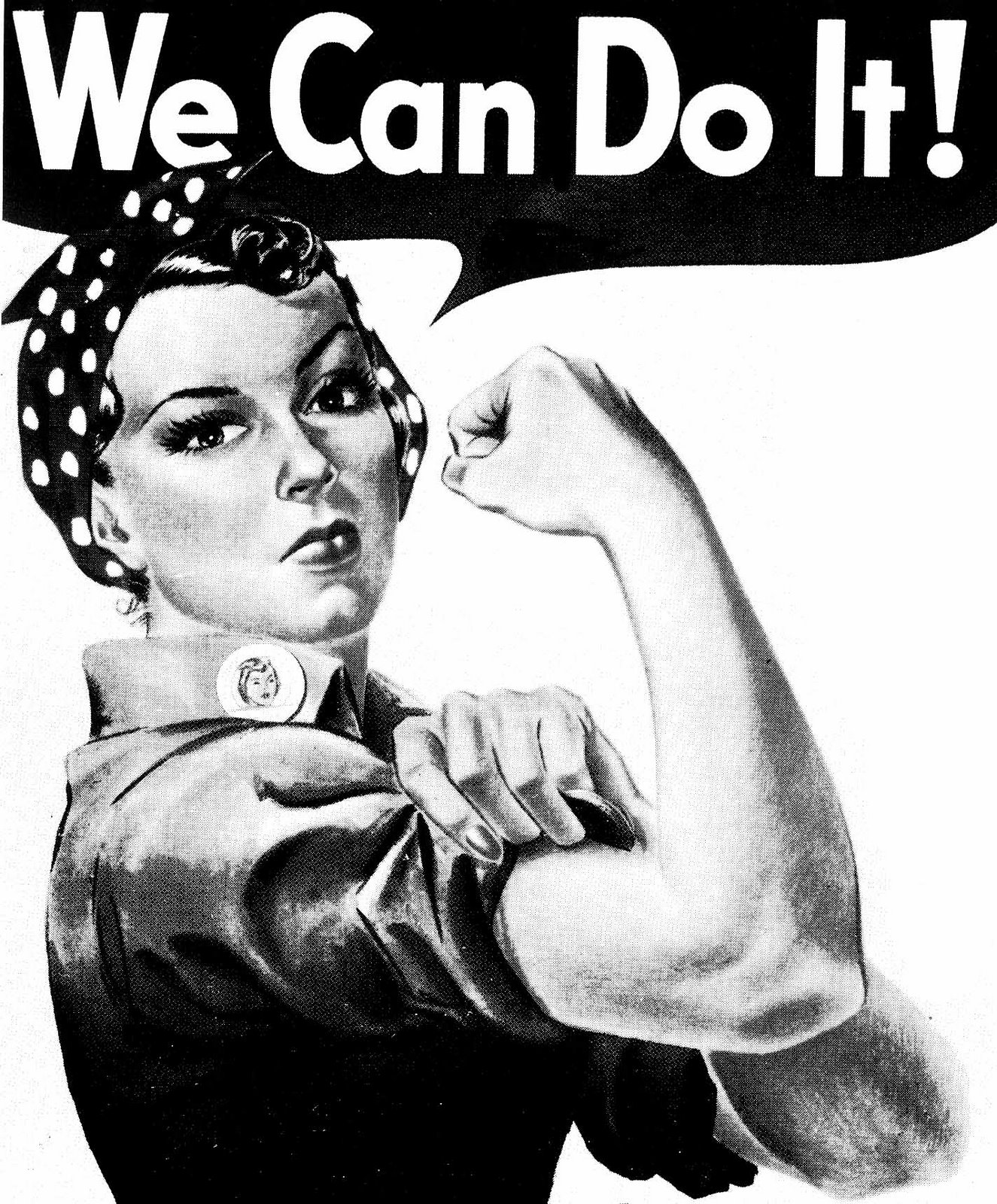
Cinsel devrim Yatakta barış, dünyada barış!
Artist J. Howard Miller produced this work-incentive poster for the Westinghouse Electric & Manufacturing Company. Though displayed only briefly in Westinghouse factories, the poster in later year has become one of the most famous icons of World War II. As women were encouraged to take wartime jobs.

We can do it! Lady by LenaPen on DeviantArt
J. Howard Miller's "We Can Do It!" poster from 1943. The poster was little seen during World War II. It was rediscovered in the early 1980s and widely reproduced in many forms, often called "We Can Do It!" but also called "Rosie the Riveter" after the iconic figure of a strong female war production worker. The "We Can Do It!"
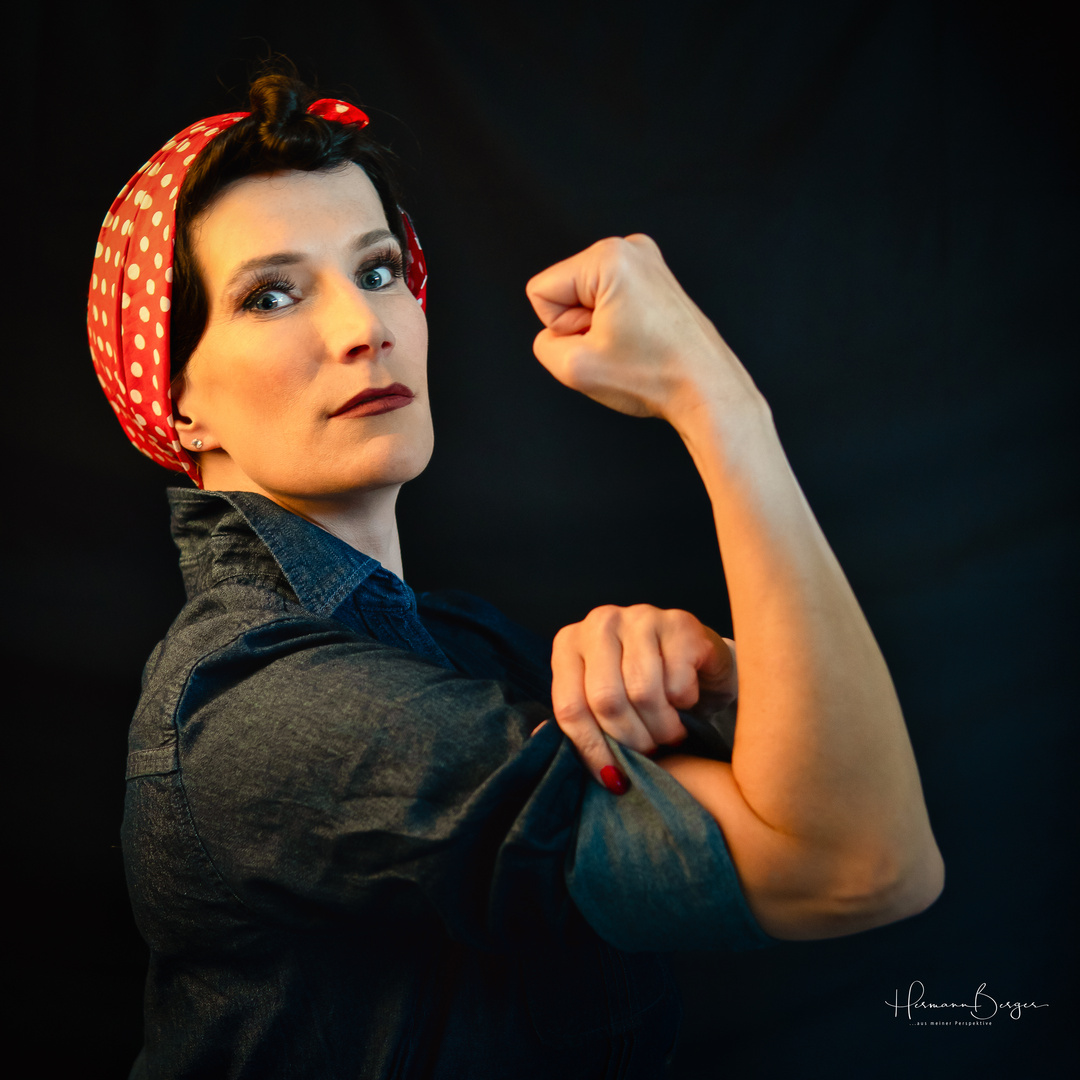
We can do it Foto & Bild portrait, portrait frauen, indoor Bilder auf
Feb 15, 2018. We're all familiar with the iconic image of Rosie the Riveter in her famous "We Can Do It!" stance, but not many people know much about the woman who inspired artist J. Howard Miller to create the poster. This is likely because the true identity of the woman behind this image wasn't discovered until 2016.
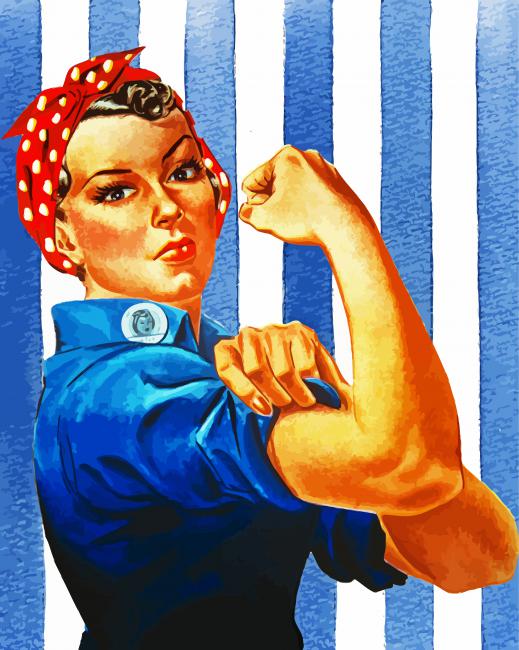
Retro Woman We Can Do It Poster NEW Paint By Numbers Paint by numbers for adult
The "Rosie" image popular during the war was created by illustrator Norman Rockwell (who had most certainly heard the "Rosie the Riveter" song) for the cover of the Saturday Evening Post on May 29, 1943 — the Memorial Day issue. The image depicts a muscular woman wearing overalls, goggles and pins of honor on her lapel.

We Can Do It by leslie baltazar on Dribbble
"We Can Do It!" poster by J. Howard Miller, 1943. [Image: Wiki Commons] Today, the now-famous image of Rosie the Riveter might evoke the heroic way women during World War II assumed jobs.

We can do it! by Hyeryun Lily Kim on Dribbble
Few images have been as emblematic of the feminist movement than the iconic poster of a working woman rolling up her sleeve, flexing her arm, and proclaiming "We Can Do It!". The poster, created in 1943 by J. Howard Miller, has long been synonymous with Rosie the Riveter, a cultural allegory representing the many women who had swiftly.

We can do it! poster hires stock photography and images Alamy
Positioned under the maxim "We Can Do It," the "Rosie" image has come to broadly represent the steadfast American working woman, and more specifically, the millions of female laborers who.
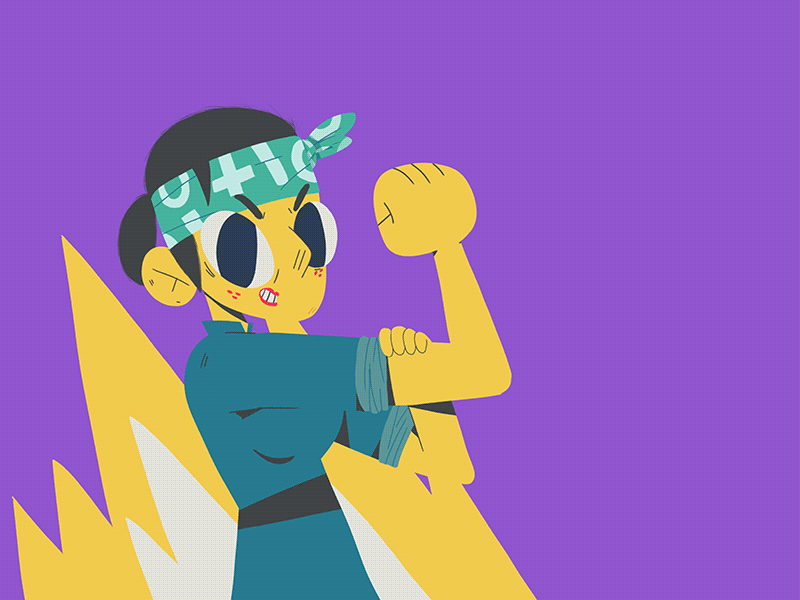
International women's day by Yimbo Escárrega on Dribbble
"We Can Do It!" by J. Howard Miller is an image that can simultaneously be interpreted as a champion of women's empowerment as well as a dictator of the nature of womanhood. It lays the foundation for what some see as an iconic feminist image with a strong, muscle-flexing woman as its focus point.
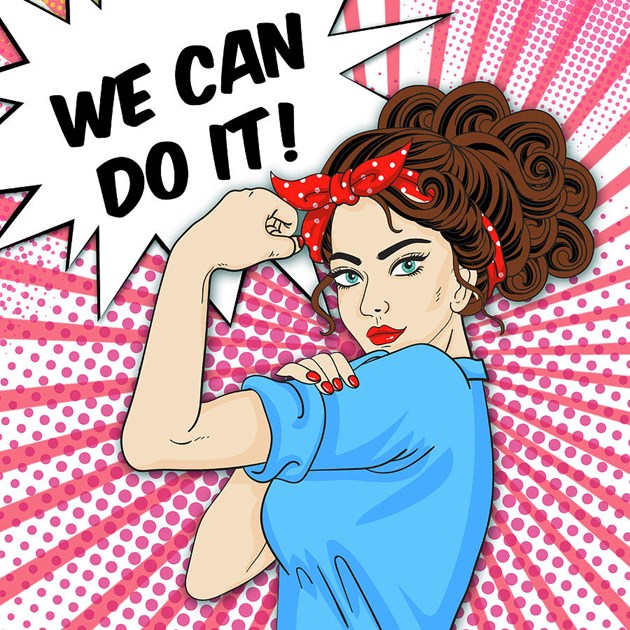
Valeria Moretti is fundraising for ActionAid
Rosie the Riveter, media icon associated with female defense workers during World War II. Since the 1940s, Rosie the Riveter has stood as a symbol for women in the workforce and for women's independence. She is famously depicted in J. Howard Miller's 'We Can Do It!' poster.

We Can Do It Svg Graphic by CitraGraphics · Creative Fabrica
Years after, in 1982, the "We Can Do It!" image was reproduced in a magazine article, "Poster Art for Patriotism's Sake", a Washington Post Magazine article about posters in the collection of the National Archives. From then on, feminists and others have seized upon the uplifting attitude and apparent message to remake the image into many different forms, including self-empowerment.

WE CAN Awarded 150,000 From The Women’s Foundation Of Boston Cape & Plymouth Business Media
Throughout the twentieth century, the meaning behind the Rosie the Riveter image evolved as women continued to strive for freedom from societal norms. In the 1970s, women from the second-wave feminist movement rediscovered "Rosie the Riveter" and transformed the WWII era propaganda poster and her slogan "We Can Do It" into a symbol of women's.

50 Women Leading Corporate America it can happen if we work together ShowMe50
J. Howard Miller's "We Can Do It!" poster from 1943 "We Can Do It!" is an American World War II wartime poster produced by J. Howard Miller in 1943 for Westinghouse Electric as an inspirational image to boost female worker morale. The poster was little seen during World War II. It was rediscovered in the early 1980s and widely reproduced in many forms, often called "We Can Do It!"
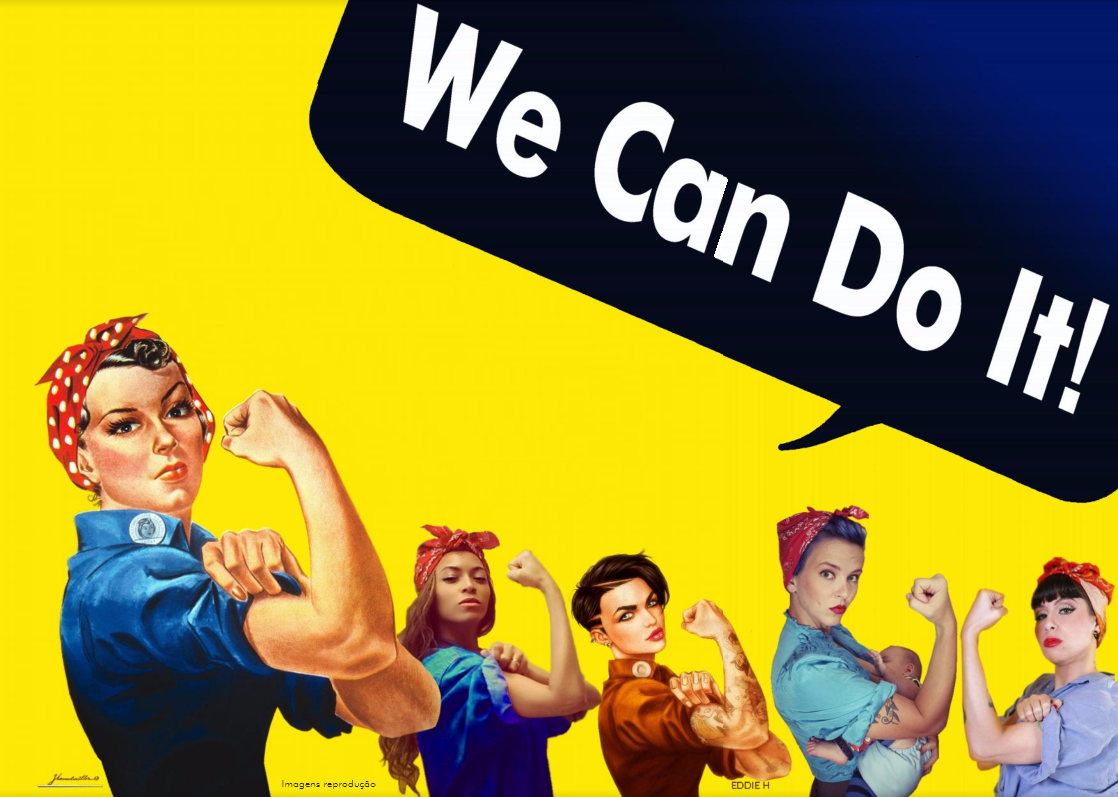
We can do it Portal de Divulgação Científica do IPUSP
In the first one, titled Rosie the Riveter, she's a large woman perched on a pylon, eating a ham sandwich while holding a large riveting machine. Unlike the We Can Do It! Rosie, she's also.

feminisme we can do it scarlet hemkes Ik Vrouw van Jou
One fine day in 1942, a 20-year-old girl was photographed in a stylish red-and-white polka dot bandana while working on a vertical turret lathe at Naval Air Station in Alameda, California. The.
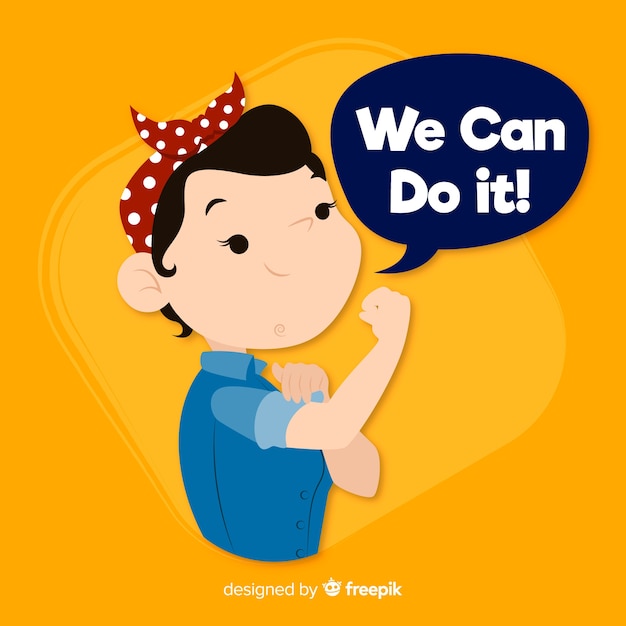
Page 2 We can do it rosie riveter girl power Images Free Vectors, Stock Photos & PSD
The lady in 'We can do it!' poster of 1943, or more famously known as Rosie the Riveter has been a case of disagreement for many years. The term Rosie the Riveter was coupled with various apparently fabricated stories. The song: 'Rosie the Riveter' from the song with the same name was written by Redd Evans and John Jacob Loeb during 1942.
- The Last Night Of The Proms 2023
- Wie Alt Ist Christian Wolf
- Wie Oft Passt Deutschland In Australien
- Die Tribute Von Panem Rollen
- Mode Im 18 Jahrhundert Frauen
- Jesus Zieht In Jerusalem Ein Kindergarten
- Zug Um Zug Spiel Deutschland
- Viva La Diva Massimo Sinato
- Clanul Sezonul 2 Episodul 13
- Warum Gibt Es Keine Wrigleys Kaugummis Mehr